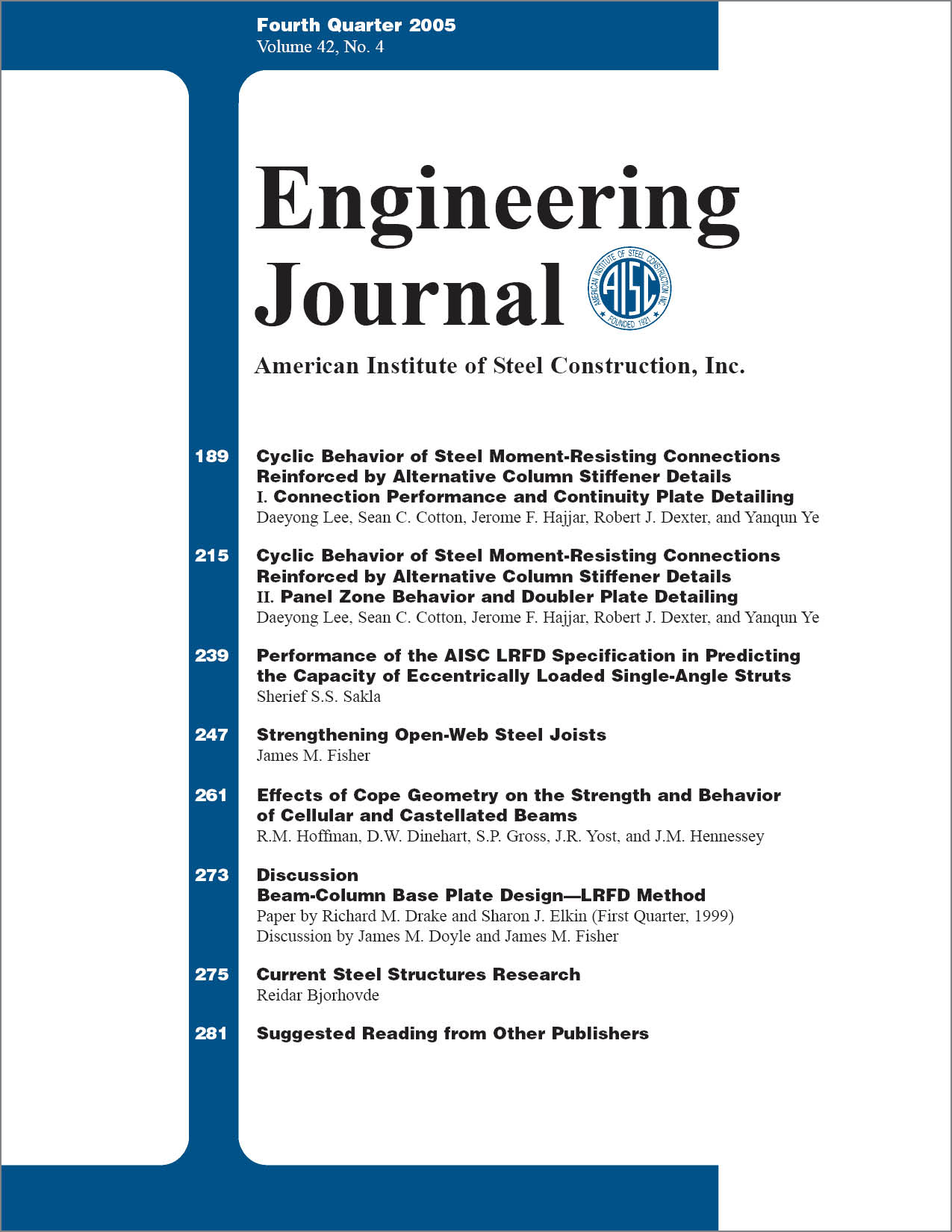Performance of the AISC LRFD Specification in Predicting the Capacity of Eccentrically Loaded Single-Angle Struts
DOI:
https://doi.org/10.62913/engj.v42i4.861Keywords:
Columns and Compression MembersAbstract
Experimental load-carrying capacities of eccentrically-loaded single-angle struts are used to evaluate the predictions of the current and previous AISC LRFD specifications. Some 91 tests conducted on equal-leg angles and 42 tests conducted on unequal-leg angles were examined. It is shown that the current AISC LRFD specification (AISC, 2000) compares satisfactorily with available experimental results and provides a much better estimate of the load-carrying capacity when compared with the previous version of the specification (AISC, 1993). The current specification provided a lower bound for all unequal-leg test results and slightly overestimated the load-carrying capacity of 15 equal-leg test results. A reliability study, using Monte Carlo simulation, revealed that both equal- and unequal-leg single-angle struts exceeded the target reliability index in the current specification. The common practice of detailing the end connection of single-angle members in such a manner that the load point, located along the connected leg, is as close as possible to the projection of the angle centroid on the connected leg has been investigated using the provisions of the current AISC LRFD specification. As per the current specification, locating the load point at the projection of the centroid on the connected leg does not result in the largest achievable load-carrying capacity.

